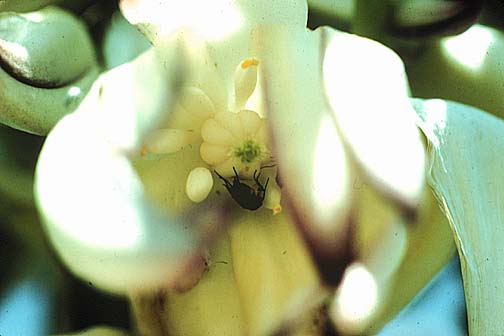
As a result of this interaction an insect-plant mutualism occurred (pollination). As the climate temperature and humidity increased so did the insect population and thus so did the plant population as well.
 |
Interactions of plants and pollinators are the clearest examples of antagonistic-mutualism. This evolution of feeding of spores, pollen, and other flowering plants by early arthropods must have caused harm initially, but was the antagonistic interaction on which selection and eventually mutualism could be achieved.
As a result of this interaction an insect-plant mutualism occurred (pollination). As the climate temperature and humidity increased so did the insect population and thus so did the plant population as well. |
Female moths pollinate the yucca flower by laying eggs in the ovary of the flower. The females collect the pollen, then actively pollinate the flower after laying the eggs inside. The larvae, which are produced, eat the some of the seeds but not enough to harm the plant. This flower in particular does not produce nectar so other pollinators will share the space.
| BACK |
|